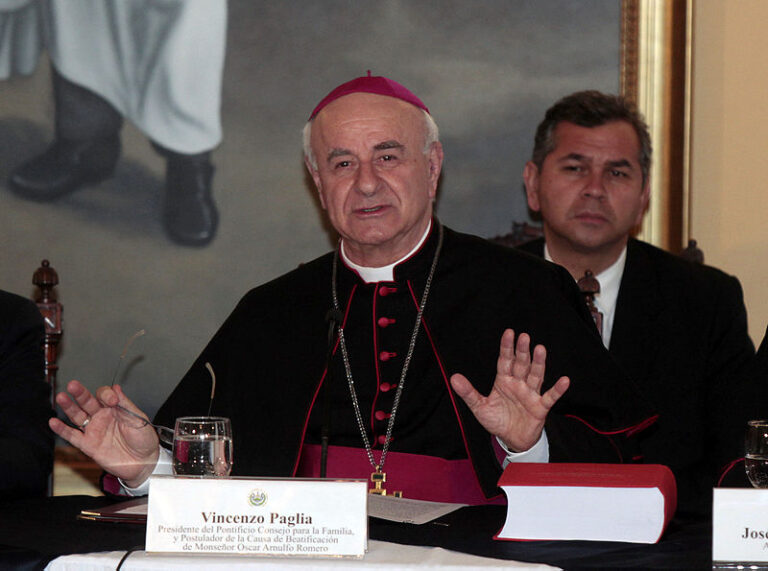Fatal Misconception
Reviewed by Steven W. Mosher
I imagined that Fatal Misconception (Belknap Press, 544 pages, $35) would be a no-holds-barred historical account of how the West imperialistically imposed population control on the rest. Connelly, however, at the very outset of his study, specifically eschews this obvious and necessary approach, He dismisses as simplistic the notion that the history of population control should he presented as a “global conspiracy” perpetrated by “white, wealthy elites … on the rest of the world.” (14) Instead, he attempts to impose on the past a complex narrative, feminist in conception, which leads him to ignore certain kinds of data and, in the end, reach an ideologically driven conclusion that is fundamentally wrongheaded. Let me explain.
Certain radical feminist groups have long argued that, whatever problems associated with forced-pace population control programs, the Catholic Church, in opposing contraception, sterilization and abortion, has been and remains an equally egregious violator of reproductive freedom, It is this viewpoint that Connelly — naively in my opinion — adopts. This is to say, he condemns both the state-enforced anti-natal efforts of the population controllers and the pro-natal, pro-family exhortations of the Catholic Church with equal vigor, as if there were no difference between the two. Indeed, he glosses all efforts to influence human fertility, however violent or benign, as “population control projects … shar(ing) the premise that societies should consciously reproduce themselves by design, even if that meant controlling how people disposed of their own bodies.”
It is easy to find examples of countries whose governments have resorted to heavy-handed sanctions to drive down the birth rate. China’s one-child policy is only the best known — and most vicious — of such programs. But what in the world does Connelly mean when he repeats radical feminist claims that the Catholic Church “makes people breed?” He is obviously not referring to any form of direct, state-sanctioned coercion. Nor can he mean that the Church as an institution practices forced marriage and reproduction, like some cults of recent vintage.
Even so, it is the pro-natal influence that the Church wields among its adherents that Connelly, like those he interviewed at the U.N. Population Fund, finds objectionable. Latin America has proven resistant to the legalization of abortion and state-driven sterilization campaigns because, he claims, “of transnational cooperation among clerical and lay Catholic elites. Because they were so effective in limiting access to birth control and abortion, this region continues to have some of the highest rates of unsafe abortion in the world”
Abortion remains illegal in most of Latin America, however, not because of some dark Catholic conspiracy, but because the majority of Catholics in these predominately Catholic countries desire legal protection for the unborn. What Connelly and other abortion advocates (he identifies himself as such) are really objecting to, in other words, is democracy.
What about the claim that countries that protect the unborn have high abortion rates anyway, so why not make the abortions safe? This bogus argument, parroted by Connelly, has long been a staple of abortion activists. But it is no more true in Latin America today than it was when it was first advanced in America 40 years ago. In the run-up to the Columbian abortion decision, activists stridently claimed that there were as many as 500,000 illegal abortions each year. But when I interviewed the responsible Columbian Vice Minister of Health six months later, when abortions were no longer illegal, she told me that only fifty (50) had been reported. A movement that inflates the numbers by a thousand or more may lack principles, but it does not lack chutzpah. One would expect a responsible historian to have a healthy suspicion of such highly charged and ideologically motivated claims.
A history of the population control movement would, of course, not be complete unless it included passages indicating how the Church and its adherents played a leading role in calling attention to, and mitigating, its excesses. Indeed, Connelly is not far from the mark when he writes, “Those who wanted to control world population …were opposed by an even more formidable apparatus, the Roman Catholic Church, which rallied Christian and Muslim conservatives and answers only to God.” (15) But he strays badly in asserting that there is any kind of moral or practical equivalence between Church and state in their efforts to influence fertility. How can one honestly equate the abortion machines and sterilization scalpels used by the State on its subjects with the gentle moral suasion exercised by the Church over its voluntary adherents?
Connelly’s uncritical adoption of the radical feminist point of
view also leads him into other errors as well. Take the idea —
central to the worldview of academic feminism — that ordinary
housewives around the world are just as desperate for access to
contraception, sterilization and abortion as their swinging sisters in
Manhattan and Hollywood. If true, this would suggest that, stripped of
their coercive elements, fertility reduction programs would not be a
Western imposition at all, but a welcome form of foreign aid driven by
local demand for its anti-natal products and services. This, in fact,
is Connelly’s position, The reality, however, is that the so-called
“unmet need for contraception” on the part of developing
world women is a statistical fabrication deduced from skewed survey
questions, If you ask women directly about their health needs —
as we at PRI have done in several countries — they answer clean
drinking water, antibiotics, malaria tablets — anything
but “reproductive health” or “family
planning.” In other words, they want treatment for the real
diseases that plague their lives and those of their family members.
And, unlike radical feminists, they do not consider pregnancy to be a
disease. Infected by the fevers of radical feminism, by the end of the
book Connelly is no longer writing conventional history at all.
Instead, he is deliriously recounting the glorious victory of the
feminists at the 1994 Cairo Conference on Population and Development,
where they supposedly won a decisive victory over both the (male)
population controllers and the (patriarchal) Catholic Church, and
ushered in a golden age of gentle and beneficent “reproductive
health” programs where everyone contracepts happily ever
after.
But was 1994 really the “end of history” for the population control movement? Tell that to the women of Peru, who in the late nineties saw 300,000 of their number sterilized in a nationwide campaign that was organized by the UN. Population Fund, encouraged by USAID, and supported by China. The women of India might have opinions on this subject as well, given that India’s population control program has a long history of coercion. The states of Gujarat, Rajasthan, Hary-ana, Andhra Pradesh, Orissa and Madhya Pradesh have in recent years barred those with more than two children from anti-poverty programs, loans, subsidies or government jobs. And do we really have to mention the women of China, large numbers of whom continue to be forcibly aborted and sterilized each year? If there is no “global involvement,” why do the IPPF and the UNFPA — two leading global organizations — continue to actively assist the Chinese government’s efforts, all the while loudly applauding the “progress” that country has made in controlling its population?
A more accurate view of what happened at Cairo was offered by James Grant of the U.N, Children’s Fund, who said simply, “Women and children are to be the Trojan Horse for dramatically slowing population growth.”
This is not to say that Connelly’s book is devoid of interest. For example, his research reveals the bogus statistics on the economic value of children that were used to convince President Lyndon Johnson to support the population project. This dismal calculus purported to show that the birth of each child in the developing world lowered a country’s GNP by several hundred dollars! But such nuggets are spoiled by his relentless determination to demonize the Catholic Church and to concoct a near and altogether premature conclusion to what is in fact a widespread and ongoing assault on human rights,
This is all very unfortunate, for Connelly is obviously no fan of the population control movement. At the very outset of the book he sharply criticizes those who “diagnosed political problems as pathologies that had a biological basis. At its most extreme, this logic has led to sterilization of the ‘unfit’ or ethnic cleansing, But even family planning could be a harm of population control when proponents aimed to plan other people’s families, demeaning those ‘targeted’ as ‘acceptors,’ including tens of millions of poor people who were paid money to agree to sterilization.”(xi)
If he had simply followed this, his principal line of investigation, Fatal Misconception would be a book worth reading. As it is, alas, it suffers from the very defect that its title suggests.










